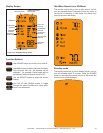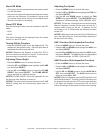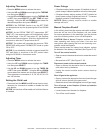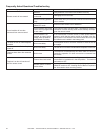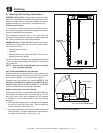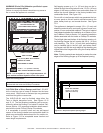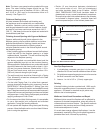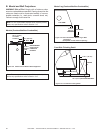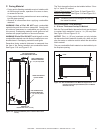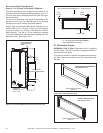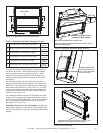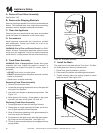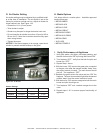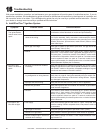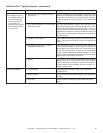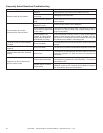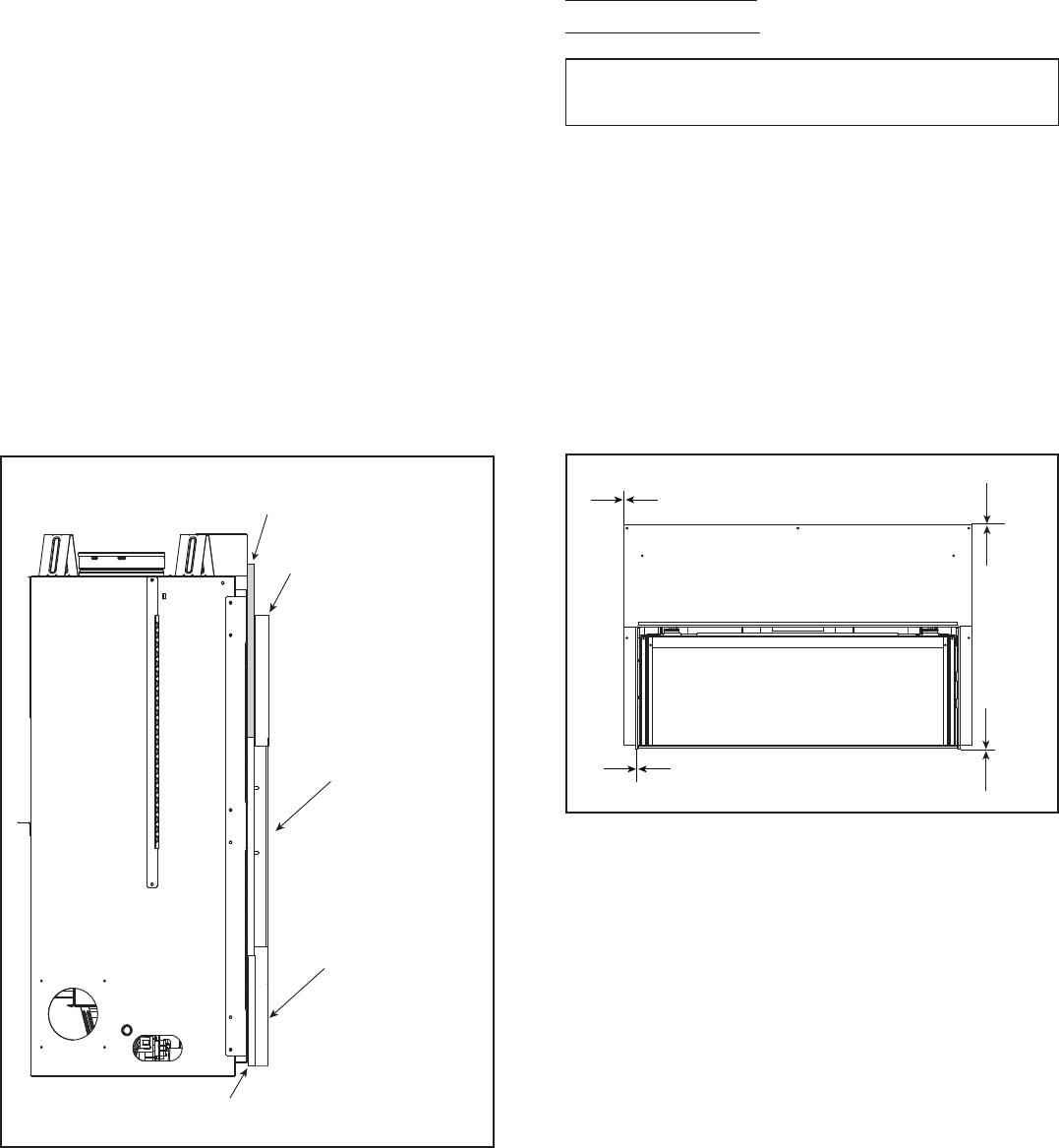
57Heat & Glo • XLR-PLUS-N-AU, XLR-PLUS-PB-AU • 2264-900 Rev. M • 7/12
C. FacingMaterial
• Facing and/or nishing materials must not interfere with
air ow through louvers, operation of louvers or doors,
or access for service.
• Facing and/or nishing materials must never overhang
into the glass opening.
• Observe all clearances when applying combustible
materials.
WARNING! Risk of Fire! DO NOT apply combustible
materials beyond the minimum clearances. Comply with
all minimum clearances to combustibles as specied in
this manual. Overlapping materials could ignite and will
interfere with proper operation of doors and louvers.
WARNING! Risk of Fire! DO NOT install drywall or other
combustible materials over the factory-installed non-com-
bustible board. Overlapping materials could ignite.
Decorative facing material thickness is measured from
the face of the factory-installed non-combustible board.
See Figure 13.8 and Figure 13.10.
Non-CombustibleFinishMaterials
0-25.4mmThickness-OverlapFitMethod
Both the Tonic and Martini decorative fronts are designed
to overlap nish materials 0 mm to 1 in. (25 mm) thick.
See Figure 13.8 and Figure 13.10.
NOTICE: This 1 in. (25 mm) maximum not only includes
the decorative nish materials (marble, tile, slate, etc) but
also the mortar or adhesive used to attach the decorative
nish material.
The non-combustible nish material can be installed up to
the replace opening.
Figure13.8OverlapFitMethod(TonicorMartiniDecorative
Front)
\\\
\\\
\\\
\\\
\\\
\\\
\\\
\\\
\\\
\\\
\\\
\\\
\\\
\\\
\\\
\\\
\\\
\\\
\\\
\\\
\\\
\\\
FACTORY-INSTALLED
NON-COMBUSTIBLE BOARD
DRYWALL OR
EQUIVALENT 3/8 in. (10 mm)
NON-COMBUSTIBLE
FINISHING MATERIAL
0 - 1 in. (25 mm) THICK
NON-COMBUSTIBLE
FINISHING MATERIAL
0 - 1 in. (25 mm) THICK
TONIC DECORATIVE
FRONT SHOWN
0 mm
0 mm
0 mm
0 mm
Figure13.9Non-CombustibleFinishMaterialDiagramfor0-1in.
(25mm)ThickOverlapFitMethod(TonicorMartini
DecorativeFront)
The Tonic decorative front can be installed with an “Over-
lap” or “Inside Fit” method:
Overlap Requirement: See Figure 13.8 and Figure 13.9.
Inside Fit requirement: See Figure 13.10 and Figure 13.11.
Note: The Martini front is not designed for use with
the inside t method.



